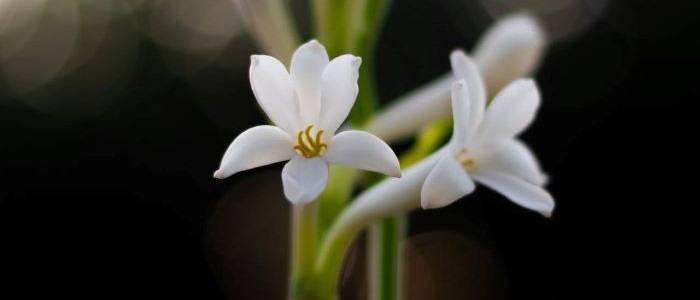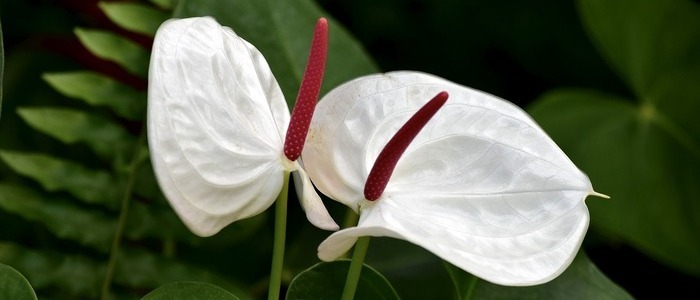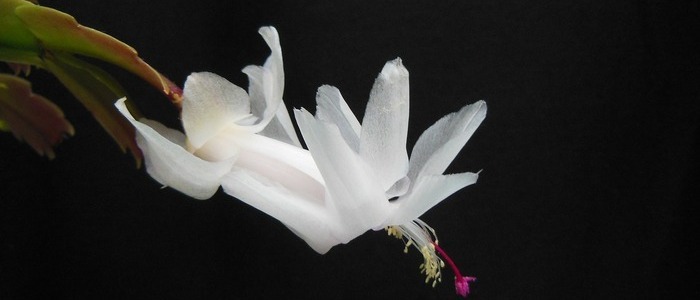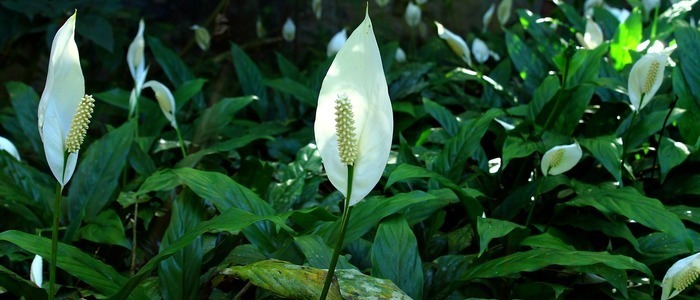Fragrant tuberoses are among the most beloved flowers in the world for their captivating beauty and delightful fragrance. If you’re looking to bring a touch of exotic luxury into your home, growing tuberoses indoors is the perfect way to do so. While it takes dedication and knowledge to successfully cultivate these plants, this guide will provide you with all the steps necessary for a successful indoor tuberose garden.
From choosing the right bulbs to preparing the growth environment and caring for your plants, you will have everything you need to enjoy these fragrant flowers in your own home

Fragrant Tuberoses Frequently Asked Questions
Are tuberoses difficult to grow in containers?
Tuberoses can be a bit challenging to grow in containers due to their specific growing requirements. These flowers need well-draining soil and plenty of sunlight to thrive. Additionally, tuberoses have a tendency to grow tall and may require staking to prevent them from toppling over in a container. However, with proper care and attention to their needs, tuberoses can still be successfully grown in containers, adding a touch of elegance and fragrance to any outdoor space.
How do you propagate tuberoses?
There are several methods you can use to propagate tuberoses. One common method is through division, where you carefully separate the tubers and plant them individually. Another method is through stem cuttings, where you take a cutting from the stem of a mature plant and root it in a growing medium. Additionally, tuberoses can also be propagated from seeds, although this method takes more time and patience as the seeds need to be stratified before planting.
Choosing the Right Fragrant Tuberoses
When it comes to growing tuberoses indoors, choosing the right bulbs is an essential part of the process. There are different types of tuberoses with different needs, so knowing what you’re looking for is key. It’s important to consider your climate and the amount of sunlight available in your chosen spot, as this will determine which type of tuberose will do best in your environment.
Additionally, timing is everything when it comes to planting – some species are better planted in spring than summer – so knowing when to plant is essential. Finally, getting bulbs from a reputable source and ensuring they look healthy will help ensure successful growth.
When selecting bulbs for indoor cultivation, it’s important to check if they are suited to the climate you live in. Some varieties can be grown year-round while others may need protection from cold temperatures or excessive heat during certain times of year; make sure to research each variety before purchasing them. It’s also essential to consider the amount of sunlight your chosen spot will get – too much light can lead to foliage burn while too little could stunt the growth of your plants.
Timing is also important when it comes to planting tuberoses indoors; some species such as Grandiflora should be planted as soon as possible after purchase while others such as Africanum can be planted at any time throughout spring until summer arrives. Make sure you know which category each type falls into before purchasing your bulbs and plan accordingly!
Finally, always make sure you buy bulbs from a reputable source like a garden center or nursery that specializes in flowers – not just any store – so you know you’re getting quality bulbs that are healthy enough for successful growth indoors. Check each bulb thoroughly before buying them: they should have firm scales with no visible signs of rot or mold on them; avoid any that seem soft or discolored as these may not sprout well even under ideal conditions!
Preparing the Fragrant Tuberose Growth Environment
Creating the ideal growth environment for tuberoses is a crucial step in successful indoor cultivation. The right temperature, humidity, drainage, and sunlight are all essential components of a healthy tuberose plant.
Temperature is an important factor when it comes to growing tuberoses indoors. It should be between 65-70°F (18-21°C). The ideal humidity level should also be considered, as tuberoses prefer a humid environment with levels between 50%-70%. To maintain the optimal humidity level, consider using a misting system or placing containers of water around the plants.
Adequate drainage is another essential factor for tuberose health. They need soil that drains well and does not become waterlogged easily; use soil containing peat moss or vermiculite for best results. Also ensure that your pot has several drainage holes to prevent too much moisture from accumulating in the soil.
Finally, adequate sunlight is necessary for growth; place your plants near windows where they can receive four hours of direct sunlight each day, and supplement this with fluorescent lights if necessary. If you do not have access to natural sunlight in your home, opt for LED grow lights instead as they provide more consistent light than other types of bulbs.
Planting the Fragrant Tuberoses Bulb
Planting the tuberoses bulbs is a crucial step in ensuring successful growth of fragrant flowers indoors. After selecting the right bulbs and preparing the environment for their growth, it’s time to begin planting them. Here are some essential steps that readers should consider when planting tuberoses bulbs:
1. Choose an ideal location – it’s important to select a spot with plenty of sunlight (at least four hours daily) and good air circulation. Also, make sure that the soil is well-draining and not too damp or wet. If necessary, add peat moss or vermiculite to improve drainage.
2. Prepare the soil – before planting, it’s important to prepare the soil for optimal growth. If using potting soil, mix it with compost or organic fertilizer before planting your tuberose bulbs in shallow trenches 2-3 inches deep. Water generously after planting and continue to water regularly throughout their growing season (spring/summer).
3. Fertilize as needed – while tuberoses don’t need much fertilization, they will benefit from receiving additional nutrients during their blooming period (usually late summer). Use an all-purpose fertilizer at half strength every two weeks as needed; avoid overfertilizing, as this can damage your plants’ roots and leaves.
4. Mulch – adding a layer of mulch around your plants is recommended for controlling weeds and retaining moisture in warmer months; wood chips or bark chips work best for this purpose but make sure to keep mulch away from stems and foliage of tuberoses plants as this can encourage fungal diseases or rot.
Following these simple steps will help readers create the perfect environment for their fragrant tuberoses to thrive indoors! With the right knowledge and dedication anyone can enjoy these beautiful flowers in their own home year round!
Caring for Your Fragrant Tuberoses
Caring for your tuberoses is an important part of successfully growing these fragrant flowers indoors. With some simple steps and routine maintenance, you can ensure that your tuberoses thrive and produce beautiful blooms.
The first step to caring for your tuberoses is to provide them with adequate water. Tuberoses need moist soil, but it should never be soggy or wet. Make sure that you avoid overwatering, as this can cause root rot and other diseases. When watering, use a watering can or hose set on a fine mist to avoid disturbing the roots. Check the soil before each watering and only water when the top two inches of soil are dry.
In addition to providing ample water, the soil must be well-drained in order for tuberoses to thrive indoors. Incorporate organic matter such as compost or peat moss into the potting mix to improve drainage and aeration so that excess moisture can easily escape from the roots. You may also want to consider using containers with multiple drainage holes at the bottom to help facilitate proper drainage of excess water.
Fertilizing monthly is another important step in caring for your tuberoses indoors. Use an all-purpose fertilizer diluted at half strength every four weeks during active growth periods from spring until fall for best results. Be sure not to overfertilize as this can lead to leaf burn or even death of the plant.
For optimal health and flowering power, make sure you deadhead regularly by snipping off spent blooms near their base with sharp scissors or pruning shears immediately after they fade away from view on each stem. This will encourage new blooms and keep your plants looking their best throughout their bloom cycle!
Finally, it’s important that you check your plants periodically for pests like aphids or spider mites as these insects can damage leaves and stunt growth if left untreated for too long. Introducing beneficial insects such as ladybugs into your garden can help control pest populations naturally without having to resort to chemical treatments which may harm other beneficial organisms in the garden environment!
With proper care and attention, you will be able enjoy fragrant tuberose blooms in your home all year round!
How to Propagate Miniature White Roses
Propagating miniature white roses is a great way to increase your collection of these beautiful flowers without having to purchase more plants or wait for seeds to sprout. While it may seem intimidating, propagating roses is relatively simple and can be done with just a few basic tools.
The most common method for propagating miniature white roses is dividing existing root systems. This process requires you to dig up the rose bush and separate the roots into two or more parts. Each part should have at least two sets of healthy foliage or buds on it before being replanted in its own pot with soil specifically designed for roses. It is important that you do not damage any of the delicate root systems when separating them, as this could negatively impact the health of your plants.
Another popular method for propagating miniature white roses is taking cuttings from stems with leaves attached. To take a cutting, use sterilized scissors or shears to snip away a stem that has at least two sets of leaves and buds on it. Dip the end of the stem in rooting hormone and then place it in moist soil. Cover the pot loosely with plastic wrap or newspaper until roots begin to form, which usually takes about three weeks. Once they have rooted sufficiently, transfer the cutting into its own pot with rose-specific soil and water it regularly so that it does not dry out completely.
Finally, another propagation technique that is commonly used for miniature white roses is layering tips of stems in moist soil. To start this method, select several stems with plenty of healthy foliage on them and bend them down so their tips are touching damp soil beneath them while keeping their upper portions above ground level. Secure each tip with U-shaped garden pins and cover them lightly with additional soil if necessary so they remain in contact with moisture but are still able to get enough light and oxygen exposure from aboveground level.
After several weeks have passed – usually around 6-8 weeks – small new shoots should appear near where each stem was bent down into the soil; once these grow large enough, sever them from their parent plant using sterile scissors or shears and repot them individually into rose-specific soil mix containers for further growth and development as separate plants over time.
By following these steps carefully, you can successfully propagate beautiful miniature white roses indoors without much difficulty! With proper care and attention, you can enjoy an ever-growing collection of stunning blooms all year round!
Common Problems with Fragrant Tuberoses
Fragrant tuberoses are a rewarding and relatively low-maintenance plant to grow indoors, but some challenges can arise if they’re not taken care of properly. A few common issues include pest infestations, incorrect fertilization, overwatering or underwatering, and inadequate lighting.
To ensure that your tuberose plants don’t become susceptible to pests or diseases, it’s important to inspect them regularly for signs like discolored leaves or small holes in petals. If an infestation does occur then use an appropriate pesticide or insecticide and increase the air circulation around the plant as well.
Fertilizing with an all-purpose fertilizer at half strength every two weeks during the growing season (from spring to fall) will help prevent nutrient burn and guarantee optimal growth and vibrant blooms. The soil should be kept consistently moist but not soggy – check the moisture levels every few days and adjust accordingly based on what you find. It’s also important to make sure there is adequate drainage – using soil containing peat moss or vermiculite as well as providing good airflow around the plant’s roots by using a pot with plenty of drainage holes can go a long way here!
Finally, tuberoses need at least four hours of direct sunlight per day (or LED grow lights) in order for them to develop properly and bloom abundantly; otherwise they may become leggy or produce fewer flowers than usual due to lack of energy production from photosynthesis processes taking place within their cells.
By following these tips readers should have no trouble cultivating fragrant tuberoses indoors all year round! With proper care and attention these plants will thrive in any indoor environment whether near a sunny window or under LED grow lights.
Conclusion
Section of this article is the perfect place to reflect on all the hard work that goes into growing fragrant tuberoses indoors. While it may seem daunting at first, with time and dedication even novice gardeners can enjoy the beauty of these delicate flowers.
It’s important to remember that success takes patience and consistency. Tuberoses should be kept away from direct sunlight, as too much sun can damage their delicate petals. Additionally, care should be adjusted for different seasons and climates; in colder months, provide extra humidity to ensure your plants remain healthy and blooming. Fertilize every two weeks for optimal growth, but do not overdo it – too much fertilizer kills more plants than not enough! With proper care and attention, readers can achieve beautiful results.
Finally, take a moment to appreciate the beauty of tuberoses in full bloom and bask in their sweet fragrance – something that cannot be achieved by any other flower! Growing fragrant tuberoses indoors requires dedication on behalf of the gardener but rewards them with an abundance of blooms throughout the year.
By following these simple steps outlined in this article, readers will be able to successfully cultivate fragrant tuberoses indoors and reap all the benefits they have to offer!
Other White House Plants









